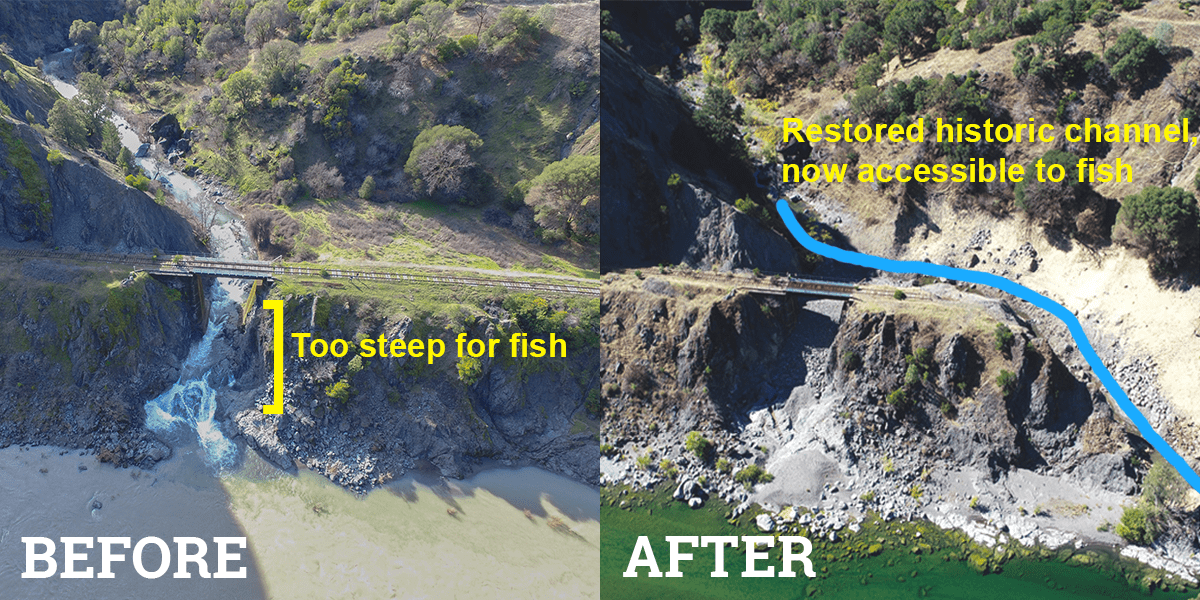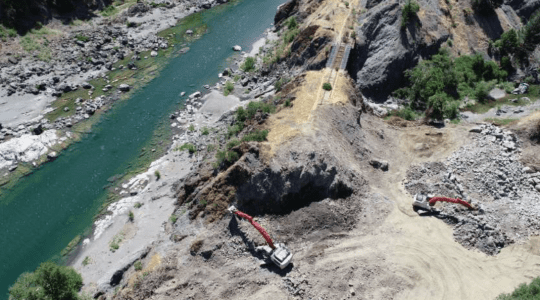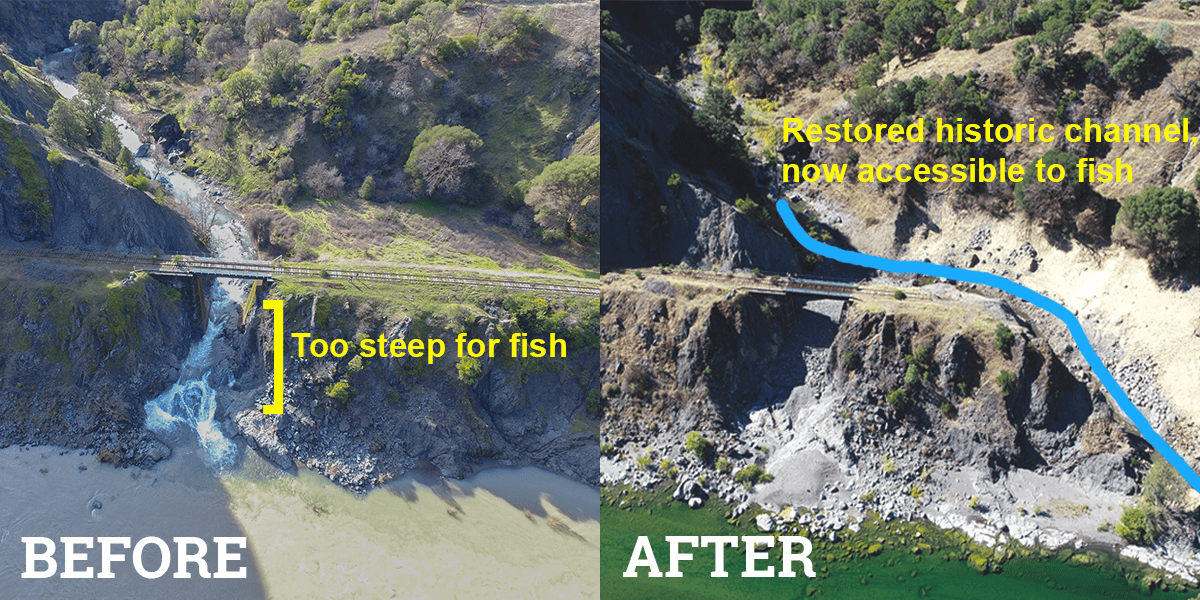Major Tributary to the Eel Flows for the First Time in Over a Century
In early July of this year, California Trout began work on a major project to restore fish passage to Woodman Creek, a major tributary of the Eel River, one of California’s most significant salmon and steelhead strongholds.
Blocked by over a mile of rusted steel rail, salmon have not found their way into this watershed for over a century.
We are proud to announce that the project has been completed with 14 miles of prime spawning and rearing habitat reconnected. Woodman Creek flows once again. Adult salmon and steelhead should have no trouble swimming up this channel and high into the Woodman Creek watershed.

A before and after aerial comparison of the Woodman Creek Fish Barrier Removal Project. Photo

Woodman Creek Fish Barrier Removal Project highlights
Over the course of 20 weeks, our contractors and field crews have worked tirelessly, excavating the old railroad embankment to create a new channel pathway of over 200 ft.
The channel below the railroad bridge is now plugged. This will prevent the stream from flowing under the railroad, instead being routed down the restored (historic) Woodman Creek channel.
This winter, flows will connect salmon and steelhead to 14 miles of spawning and rearing habitat.
A portion of the railroad grade will be left to prepare for a future “Great Redwood Trail” along the mainstem Eel River.
While flows are currently at a minimal trickle as seen in the video, this fall and winter will be a time to sit back and wait for the fish to rediscover Woodman Creek. With many miles of healthy and abundant habitat in the Eel River and Woodman Creek, it’s only a matter of time before adult runs are re-established in Woodman.
Stay tuned for updates as we continue to monitor this restored fish habitat!

Woodman Creek construction. Photo by Pacific Watershed Associates.
Thank you to our wonderful CalTrout members, staff, and directors for your continued support of the work we do.
Special thanks to our project partners: Mike Love and Associates, Pacific Watershed Associates, Pacific Earthscape, North Coast Rail Authority, Coastal Conservancy, California Department of Fish and Wildlife – Fisheries Restoration Grant Program, Ross Taylor and Associates, David Anderson, Ron Christensen, Mickey Bailey. Restoring Woodman Creek was made possible by you!

Thank you! Photo by Pacific Watershed Associates.





